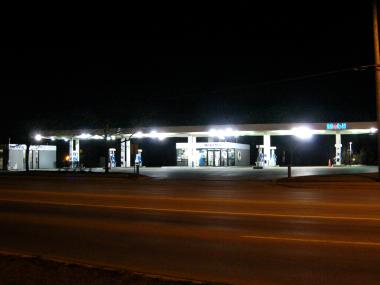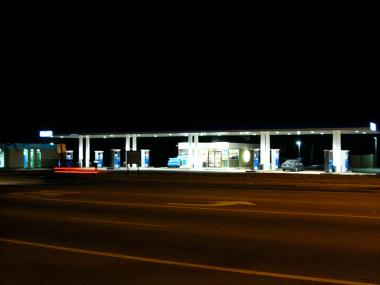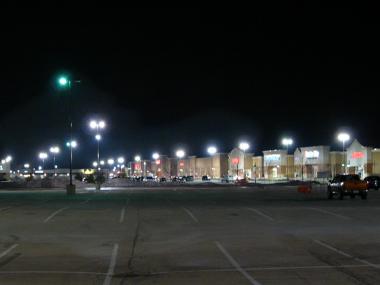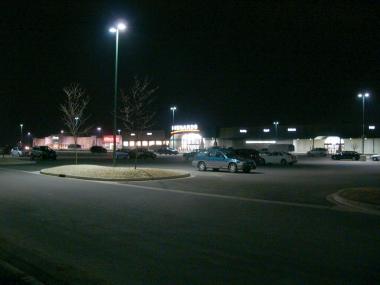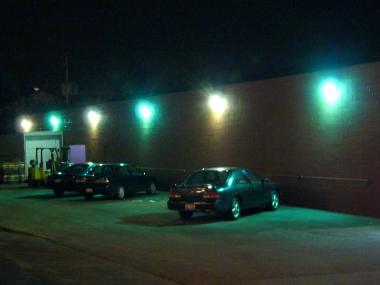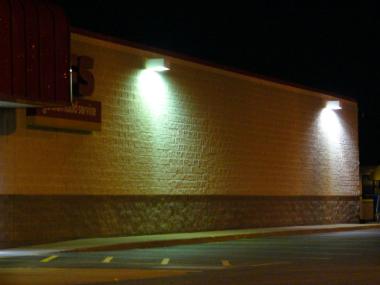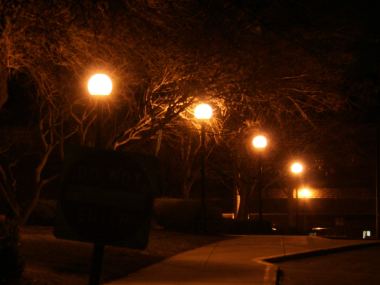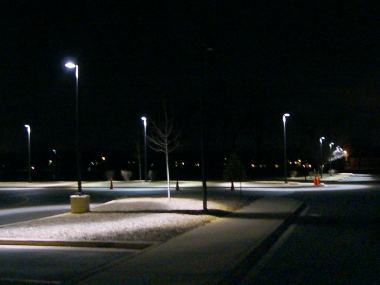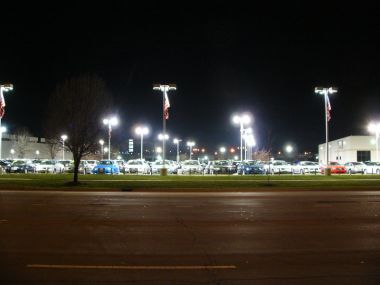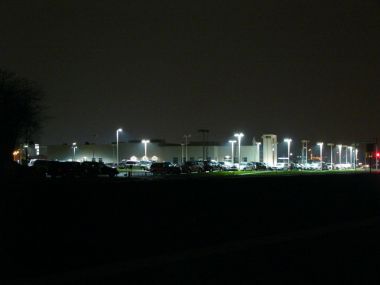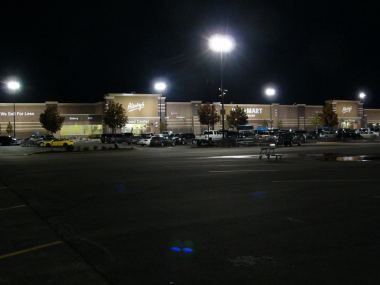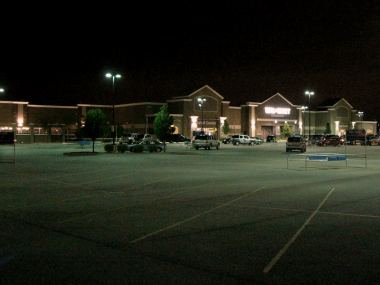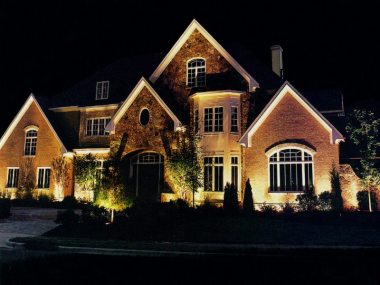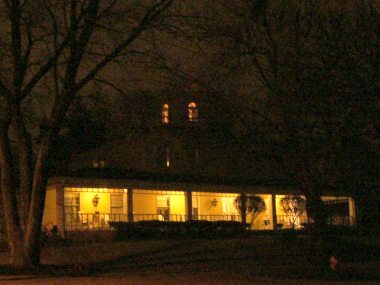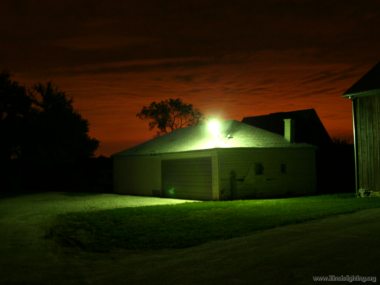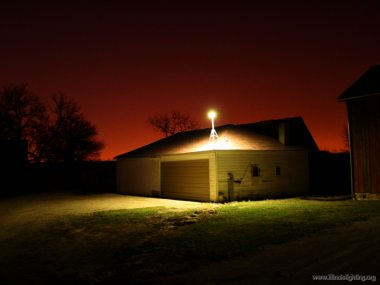Working toward legislation to curb light pollution in Illinois.
 |
|
 current page: |
Good & Bad Light Fixtures In ActionAs noted on our Lighting Studies> Theory page, manmade exterior lighting began with fires; campfires and torches generally lit up the area around them, pushing back the night for our early ancestors. Oil and gas lamps continued the fire-to-light trend; glass enclosures were developed to keep flames from blowing out. The relatively recent development of various types of electric lamps has brought a tremendous increase in the amount of light we can easily create; unfortunately, we still use light fixtures which send their now glaringly brighter output spraying out in all directions, like the torches of 10,000 years ago. Instead of simply placing a lamp in a glass globe, where two-thirds of its energy output can end up shining where illumination is unneeded or is even harmful, we can place the lamp in a modern, well engineered fully focused enclosure, which blocks light from shining where it isn't wanted, internally reflecting that potentially wasted light in the direction where illumination is desired. Such efficient fixtures can deliver the same desired illumination while using lower wattage lamps, greatly reducing energy usage, without sacrificing illumination. |
|
It is relatively easy to judge how efficiently a lighting fixture is directing its energy output. If you stand within the zone which the fixture is engineered to efficiently illuminate, and look up into the fixture, you will see the brilliant light of the lamp directly. If you stand outside of the zone, you should see none of the brilliant direct light of the lamp, only the well-lit objects within the lamp's illumination zone; indeed those objects will appear much clearer to you than they would if the light fixture was also assailing your eyes with glare. Some ExamplesWhile photographs cannot always do justice to what the eye sees (especially as far as painful glare is concerned), these un-retouched photos of real-world lighting installations around the Chicagoland area demonstrate some of the effects of poor lighting practices vs. good ones. You will no doubt see examples of both in your own area if you start looking at lights as you travel around at night. Click on any photo to see a larger version.
|
Return to Page Top |
|||
light pollution Illinois Chicago Cook County DuPage County Will County Springfield energy enviromnent global warming anti light pollution legislation lighting ordinances |
|||
